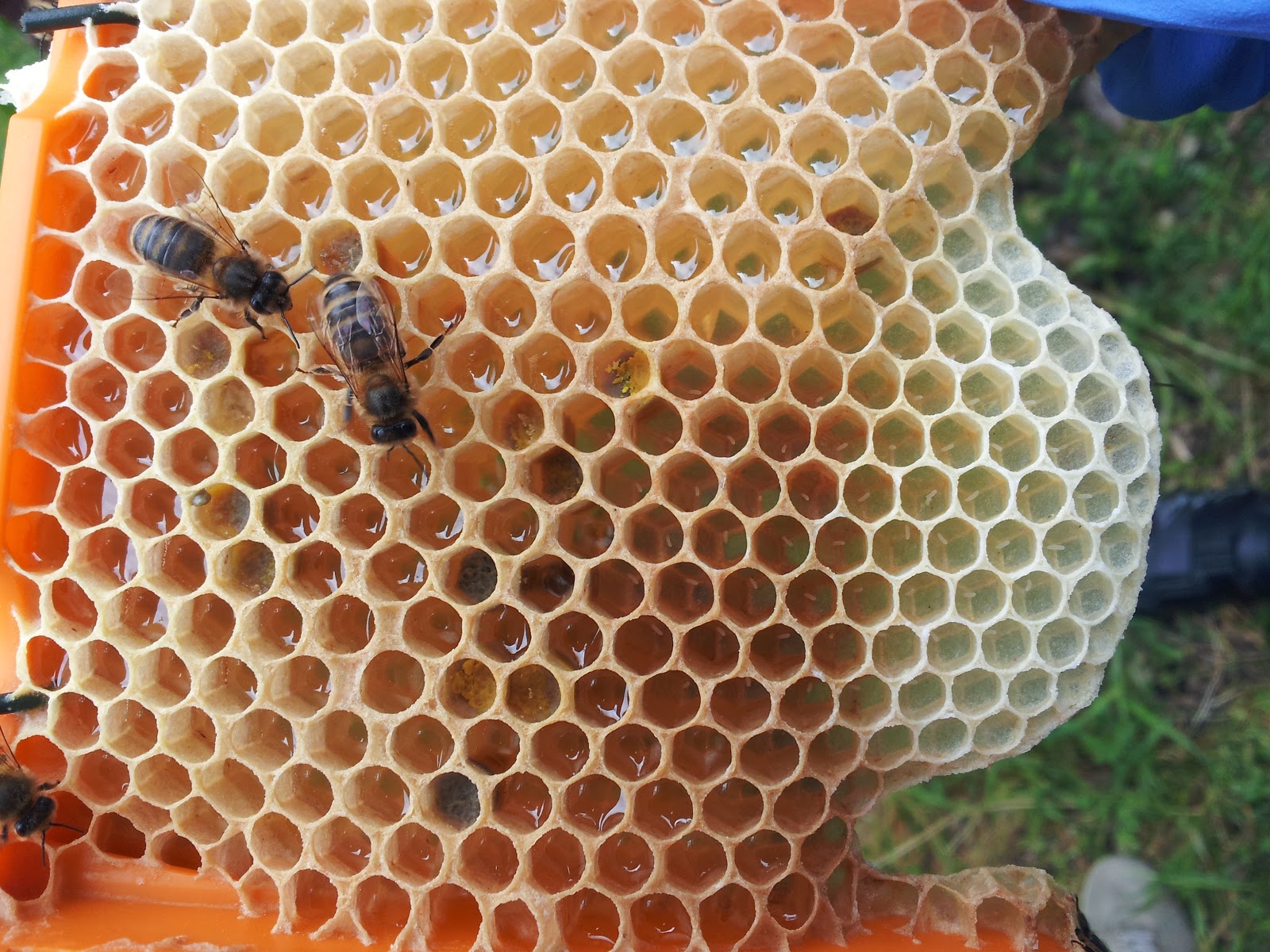Jenny explained that if action had to be taken, we would be putting a half frame in the middle of the hive, waiting for it to be filled with drone brood, then discard the brood. I'm unsure of the exact logic (why the drone brood? Is the mite more likely to lay eggs in drone brood cells? How do we know it will be drone brood in the half-frame?), but the idea is to make a cull of the brood to reduce infestation without having to sacrifice the whole colony.
There is also a thing called a bee louse which apparently is harmless so you have to be able to spot the difference between it and a varroa mite. I've found this picture online; the one at the top is a bee louse and the other three are all varroa mites.
The bees in Jenny's hive had been very busy building last week - making that whole wall of comb without a frame - so this week Jenny had been herself busily making new frames for a 'super' to add on top and give the bees room to grow, hoping she would not bee too late (was she worried they might swarm if they ran out of space?). Here is the very full hive, with lots of new pale white comb full of luscious honey:
And the new super placed on top:
Once that was done we opened the second hive, and looked at this frame - apparently bees will be hatching from it soon - the dark colour is an indication that it's used for broods as opposed to honey. There is pollen on there too.
We moved this frame out and up to the top level of the hive, replacing it with a 'top bar'. The top bar is the top horizontal piece of the frame that rests on the sides of the hive at either end, carrying the weight of the frame, comb, honey and bees. But this top bar we replaced the frame with doesn't have the other three sides which would have made it into a frame. Without the sides, the bees will attach their own oval shaped comb structure to it. We saw they had made a lot of those last week already (look at the pictures in last week's blog).
I had wondered last week why we were letting the bees make their own comb shapes and learnt today that the intention is to transfer them to a third hive which the group built earlier, and is currently sitting empty. It's a different hive design so would not take the traditional rectangular frame shape. Here it is. The sides taper downwards:
The idea here is that by moving the one frame up to the top at a time, the bees will hatch from the frame and move down to the lower half of the hive where all the other bees are (the queen in particular doesn't like crawling around a single frame with no adjacent frame on the other side to keep warm and cosy, so she won't come up there to lay more eggs), leaving that frame at the top empty (so we can take it out) and building some more leaf-shaped comb in the bottom of the hive, to be moved to the newly built hive later.














